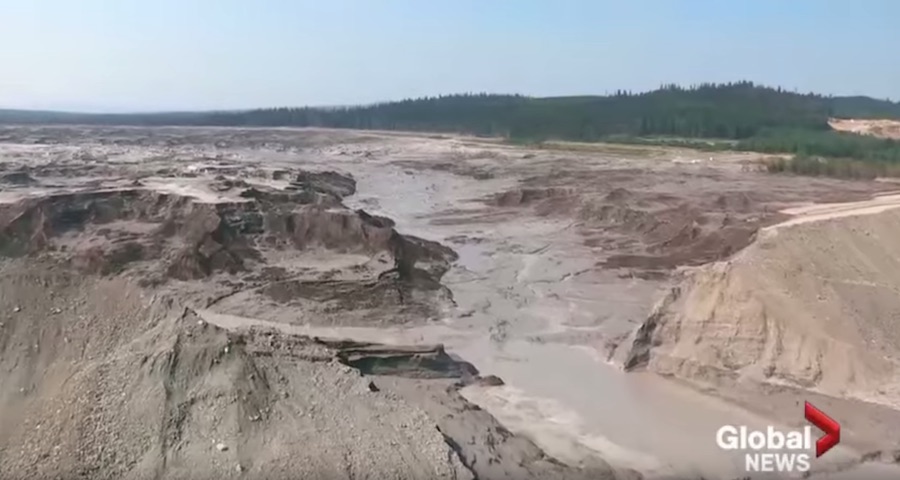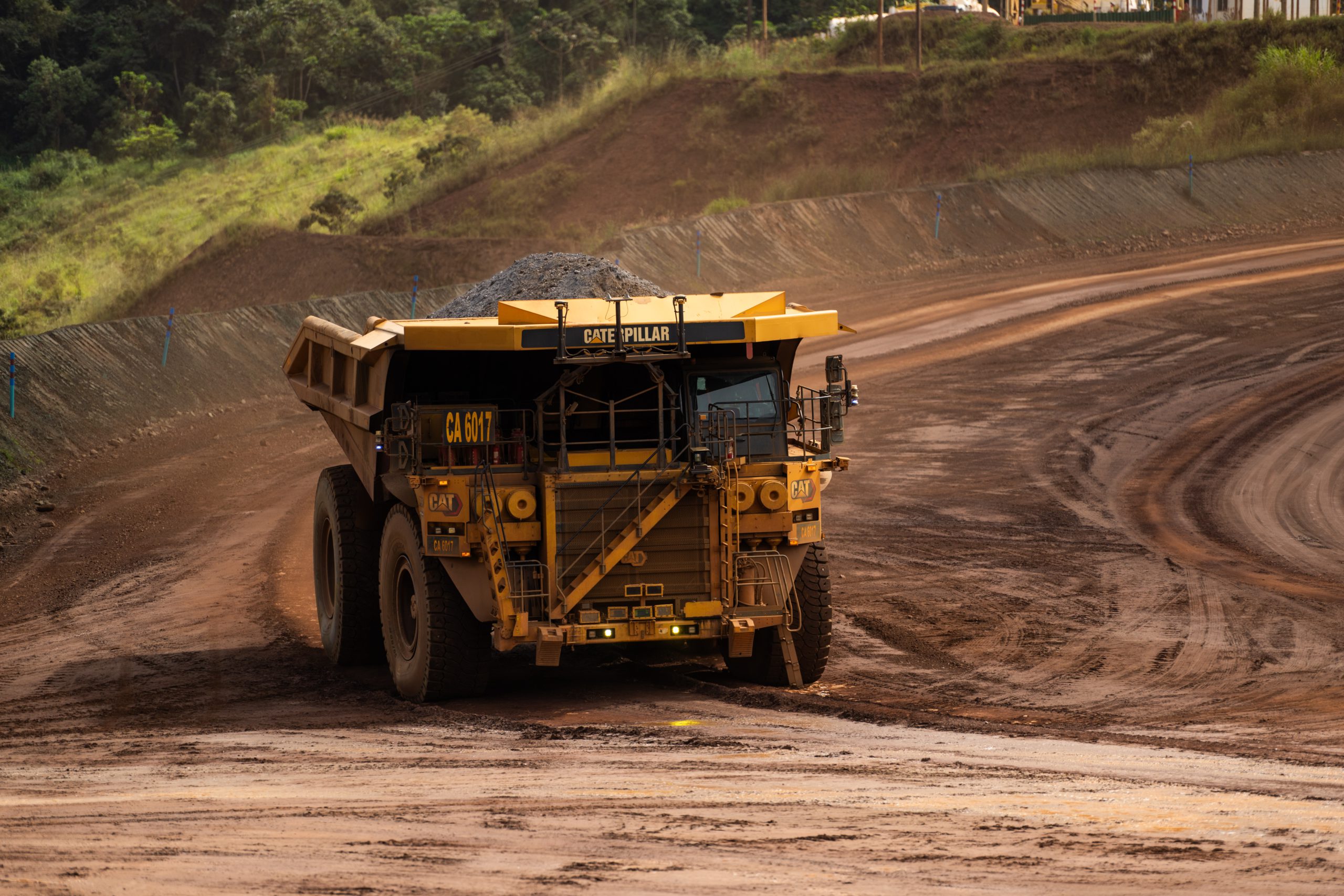Imperial Metals sues engineering companies over Mount Polley disaster

It was one of the worst environmental disasters in Canadian history, and now, the company behind the 2014 Mount Polley mine tailings breach is looking to make somebody pay.
Imperial Metals (TSX:III) has filed a lawsuit for damages in the Supreme Court of British Columbia alleging negligence and breach of contract by Knight Piesold and AMEC (now Amec Foster Wheeler), two engineering firms in its employ up to the time when the tailings dam at Mount Polley gold and copper mine collapsed. The suit alleges that Knight Piesold designed a flawed tailings dam and monitored it from the late 1980s to 2011, while AMEC took over the monitoring until the dam’s failure in summer of 2014.
The allegations have not been proven in court and neither company has filed a statement of defense, the Canadian Press reported on Saturday.
“Each of the defendants failed to undertake necessary, proper and reasonable investigation of the subsurface conditions underlying the (tailings storage facility) prior to and during its phased construction and operation,” states the suit. “The conduct of each of the defendants was negligent, was in breach of the applicable contracts and caused the ultimate failure of the (facility).”
The tailings dam failure on Aug. 14, 2014, caused an estimated 24 million cubic metres of water and tailings waste to spill into Quesnel Lake and Quesnel River. The operation was closed for nearly a year, before being given a “restricted restart” in July 2015. The event caused the mining industry a black eye in British Columbia and the provincial government was criticized for a lack of oversight.
B.C.’s chief mines inspector said in December 2015 that no charges would be laid by the provincial government due to the failure of the Mount Polley tailings dam.
“The chief inspector found that the mine and its engineers employed weak practices on the mine site and many recommendations go to new standards and guidelines to improve these practices,” said the Ministry of Energy and Mines in a news release.
Six weeks later, a government-appointed panel released its findings, which concluded that “. . . there was no evidence that the failure was due to human intervention or overtopping of the perimeter embankments and that piping and cracking, which is often the cause of the failure of earth dams, was not the cause of the breach.”
Rather it was design failures that were the main cause:
The breach of the Perimeter Embankment on August 4, 2014 was caused by shear failure of dam foundation materials when the loading imposed by the dam exceeded the capacity of these materials to sustain it. The failure occurred rapidly and without precursors.
Deposited in a complex geologic environment, the weaker glaciolacustrine layer was localized to the breach area. It went undetected, in part because the subsurface investigations were not tailored to the degree of this complexity. But neither was it ever targeted for investigation because the nature of its strength behaviour was not appreciated.
Another contributor was the construction of the downstream rockfill zone at a steep slope. The report’s authors said if the downstream slope had been flattened, failure would have been avoided.
According to Canadian Press, Imperial Metals has not specified the amount of damages it is seeking, but alleges it continues to suffer losses from the dam failure.
{{ commodity.name }}
{{ post.title }}
{{ post.date }}




7 Comments
LAMB
One question remains: Did the Senior Management of Imperial Metals try to save money during the Dam Construction by limiting the amount of material needed to construct the down-stream side of the Dam to achieve the flattened slope???
Dave
From the “Conclusions” section of the independent review panel’s Report on the failure:
“The Panel concluded that the dominant contribution to the failure resides in the design.The design did not take into account the complexity of the sub-glacial and pre-glacial geological environment associated with the Perimeter Embankment foundation.As a result, foundation investigations and associated site characterization failed to identify a continuous GLU layer in the vicinity of the breach and to recognize that it was susceptible to undrained failure when subject to the stresses associated with the embankment.
The specifics of the failure were triggered by the construction of the downstream rockfill zone at a steep slope of 1.3 horizontal to 1.0 vertical.Had the downstream slope in recent years been flattened to 2.0 horizontal to 1.0 vertical, as proposed in the original design, failure would have been avoided.The slope was on the way to being flattened to meet its ultimate design criteria at the time of the incident.”
But, don’t take my word for it, because contrary to popular belief, you can’t believe everything you read on the internet. Read the report for yourself. It can be found at https://www.mountpolleyreviewpanel.ca/final-report.
ron
Yes. Part of the problem was that waste material from the mine site originally planned to be added to the embankment had ARD issues. The haul trucks were needed for production and waste removal.
The regulator allowed the 1.3 slope which is from water dam regulations and only allowed during construction not operation. The tailing dams was kept in a state of continual “construction” by continually redesigning higher.
Lantern32
I’m not surprised that KP designed the tails dam. They seem to have problems performing, even with invasive levels of oversight.
john S. metzger
Dave said it well below — lots of good information in the documentation and public comments. What is the status of the work — site, consultants, oversite .. TODAY? Did they move the facility? No repaired it as is, on the same site that is in question ….is there regular and fully instrumented monitoring of the whole structure? Will there be?
Will consultants’ “views” and “recommendations” in annual and event documentation now take on a different meaning/importance? Are they or will they be directives? What are the “penalties” when an operation, or operators, do not support the “findings” with actions and ongoing support?
ThaOracle
What if I were to tell you that …. the agencies/regulators/etc who reviewed, signed off and issued permits for design, construction, CQA and subsequent monitoring through operation are culpable and also should be held accountable.
Andrew Mawdsley
I don’t know what condition the lake is in now but when Peter is blaming Paul I’m sure not much is being done. Which brings me to my next point, that this breach was done purposely to fulfill the industry’s, Harper’s and Aglukkaq’s dream of having certain lakes across the country turned into pollution lakes. I seem to remember 16 was to be the number of lakes to be turned into tailings ponds. That is because mining companies don’t want to be responsible for looking after their poisons, that cuts into profit. However the mining companies know that the politicians in their pockets will see that I, the taxpayer will pay for the clean up and I’ll have no choice but to drink the sludge the mining companies so endearingly leave behind in the Earth’s precious water systems.